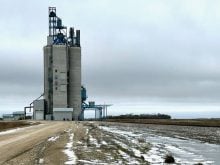Temporary foreign workers are being brought in to fill the breech as Alberta’s labour shortage pushes hog producers to the limits of their endurance.
The problem is that they can’t be brought in fast enough, forcing producers and their families to work long days trying to keep their animals fed and properly housed.
Stuart McKie, a policy specialist for Alberta Pork, is working with Service Canada on a program that could speed the process to three weeks from 40.
“They have been absolutely inundated with applications,” McKie said.
Read Also

Farming Smarter to hold Agronomy Battles series
Southern Alberta non-profit research institute hope grassroots sessions with producers help focus future research on cover crops, strip tillage and herbicide resistance
“It’s not Service Canada’s fault. It’s just the sheer volume of applications.”
Under the proposal, Alberta Pork would perform the due diligence research, called a Labour Market Opinions, that is required of employers to prove workers are unavailable locally.
It would also assess potential employers to assure foreign governments that the working conditions for their citizens are fair, safe and acceptable.
Local recruiting has ground to a halt because of the booming economy in Alberta. Many producers are looking abroad for skilled and unskilled workers, from barn workers to barn managers.
“It’s nothing to walk into your barn and find half of your staff have left to go drive trucks in the (oil) patch,” McKie said.
“You can’t just shut the machines off. You have to keep feeding and cleaning or you’ll have an animal welfare issue on your hands.”
Meanwhile, competent workers – even qualified veterinarians – from places such as the Philippines, Eastern Europe and Mexico are eager to come and work.
The foreign workers enter on two-year visas, which can be easily extended in the case of skilled workers but less so for the unskilled.
“We would much rather be able to source local employees. This is not some cheap option,” said McKie, adding the cost of bringing in foreign workers quickly adds up.
“The cheapest you can bring somebody in for is $1,700 to $1,800, including flights. It’s not an easy option, but it does supply you with very skilled and able workers.”
Hiring foreign labour is relatively new for producers, but one packer has been filling the gap by bringing in foreign workers since 2002.
Leo Collins, plant manager at Maple Leaf’s hog slaughtering plant in Brandon since 2005, said the company has used the system to solve its staffing shortages, finally putting long-awaited plans for a second shift on schedule for this fall.
“There is a lot of paperwork, but we’ve done it for so long that we pretty much have the process nailed down,” he said.
“We don’t rely on external resources to do our paperwork. We do all the applications for landed immigrant status and Labour Market Opinions internally.”
Shortly before he left for Germany on a recruiting trip, Collins said the latest group of 50 foreign workers were due to arrive in Brandon from Mauritius, an island off the coast of Africa near Madagascar.
People from China, El Salvador and Ukraine, who now make up a large percentage of the plant’s 1,650 workers, come on two-year work visas under the Manitoba nominee program and are eligible to apply for landed immigrant status if they choose to stay.
Their starting wage is $10.55 per hour, which can be topped up with a $1 per hour perfect attendance bonus and another $1 per hour productivity bonus. After the first year, wages rise to $13 an hour.
Employee turnover at the plant is 24 percent per year, said Collins, who added foreign workers tend to stay with the company longer.
“We’ve had a pretty good retention rate, probably 95 to 96 percent of the workers who have received landed immigrant status,” he said.
“When our people decide that they want to get landed immigrant status, we do that for them. It’s a service that we provide. We’ve got the expertise in-house to make it happen.”
The company offers applicants a forgivable loan of $1,000 to help with the $1,500 cost of applying for permanent residency.
Bringing in a foreign worker can cost $4,000 to $6,500, he said, depending on country of origin, airfare, hotels and relocation expenses.
It takes the Canadian embassy in the country of origin eight to 16 weeks to process temporary work visas. The entire process, including health and police checks and interviews, generally takes about six months.
“We usually bring them over in groups of 50 to 70 because that’s all our orientation program can handle,” Collins said.
Maple Leaf books flights, arranges rental accommodations in Brandon and provides necessities such as spending cash, bus passes, beds and linens.
He said landlords often go out of their way to furnish the apartments, and local churches and non-profit organizations help workers get settled and feel welcome.
“From a streamlining perspective, the Canadian government has done a really good job,” he said.
“When we first got into it, we needed to provide a Labour Market Opinion before they would even begin the temporary visa process. But now they do those in conjunction. So while we’re doing LMOs, they’re already processing visas.”














